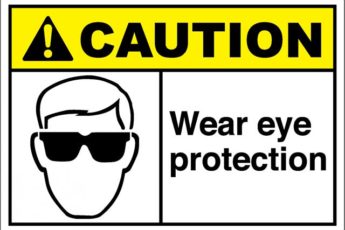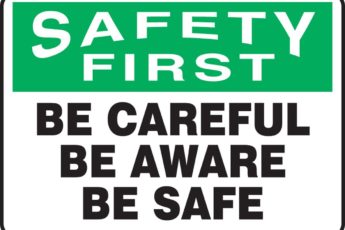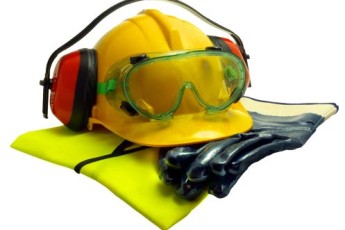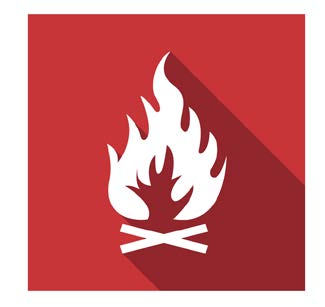By Chris Demeter, Senior Loss Control Consultant
Have you ever experienced an eye injury at work or maybe at home while using that new weed whacker? The National Institute for Occupational Safety and Health (NIOSH) reports that every day about 2,000 U.S. workers sustain job-related eye injuries that require medical treatment. Using the right eye protection can lessen the severity or even prevent many of these eye injuries.
Chemicals or foreign objects in the eye and cuts or scrapes on the cornea are common eye injuries that occur at work and even at home. Other common eye injuries come from splashes with grease and oil, burns from steam, ultraviolet or infrared radiation exposure, and flying wood or metal chips.






 As the winter months are upon us, so is the use of furnaces, personal heaters, propane heaters and a plethora of other heating devices. These heating devices can often cause safety concerns, especially those regarding
As the winter months are upon us, so is the use of furnaces, personal heaters, propane heaters and a plethora of other heating devices. These heating devices can often cause safety concerns, especially those regarding
 Having seen most of our workers’ compensation injuries related to inadequate LOTO (Lockout Tagout) procedures and where the majority of our members have the most questions; I directed our conversation to the LOTO requirements and what they are looking for. What I found out was in the 1990’s OSHA and ANSI came together as a board to interpret and clarify what actually applies to the printing industry, since there are a variety of printing presses with different technologies, and most of them spanning many years.
Having seen most of our workers’ compensation injuries related to inadequate LOTO (Lockout Tagout) procedures and where the majority of our members have the most questions; I directed our conversation to the LOTO requirements and what they are looking for. What I found out was in the 1990’s OSHA and ANSI came together as a board to interpret and clarify what actually applies to the printing industry, since there are a variety of printing presses with different technologies, and most of them spanning many years.
 HAPPY NEW YEAR – 2016! A new year – new beginnings – new opportunities to change. How did your 2015 end? The Claims Department ended with a BANG! As if there aren’t enough challenges in our lives and in the work place. We contend with family, friends, health issues, school, our homes and work on a daily basis, and then, the HOLIDAYS arrive and add a lot more stress! Even though we may look forward to the holidays and consider it a “happy” time, it can be stressful, none the less. There is shopping to contend with, trying to get just the perfect present for everyone, entertaining, socializing, all adding up to an extra financial stress. People are using up vacation time and trying to get work caught up before being off for a day or more.
HAPPY NEW YEAR – 2016! A new year – new beginnings – new opportunities to change. How did your 2015 end? The Claims Department ended with a BANG! As if there aren’t enough challenges in our lives and in the work place. We contend with family, friends, health issues, school, our homes and work on a daily basis, and then, the HOLIDAYS arrive and add a lot more stress! Even though we may look forward to the holidays and consider it a “happy” time, it can be stressful, none the less. There is shopping to contend with, trying to get just the perfect present for everyone, entertaining, socializing, all adding up to an extra financial stress. People are using up vacation time and trying to get work caught up before being off for a day or more.




 Through a review of the lacerations within MTMIC’s loss run history, the issue of laceration injuries is very apparent. Since 2009, 2,091, or 25% of the total 8,536 injury claims reported have been lacerations. Of those 2,091 laceration claims, 1,508, or 72%, were reported to have taken place on the hand (fingers, thumbs) of the injured employee.
Through a review of the lacerations within MTMIC’s loss run history, the issue of laceration injuries is very apparent. Since 2009, 2,091, or 25% of the total 8,536 injury claims reported have been lacerations. Of those 2,091 laceration claims, 1,508, or 72%, were reported to have taken place on the hand (fingers, thumbs) of the injured employee. By Ruth Kiefer, ARM Loss Control Manager
By Ruth Kiefer, ARM Loss Control Manager